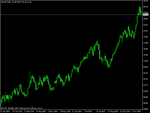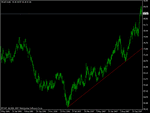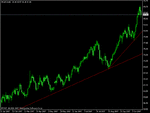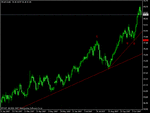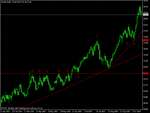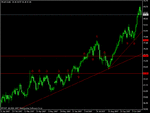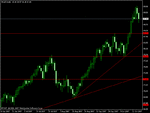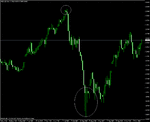As one clever observer has already pointed out, my FTSE chart does not look the same as his! Principally, he has no pin bar but a bullish bar instead!
The reason for the discrepancy is the SB broker I use has a unique way of dealing with gaps.
If a gap up/down occurs in price, rather than simply open the market at the new level leaving a visible gap on the chart, it will "fill" the price in on the chart.
So in this case, when the market gapped down after the weekend, rather than a chart showing a lower open (a gap) followed by a move up (to fill the gap)- my broker shows a large bar down that then retraces.
I hope this is not too confusing and I thought I would just let this one ride rather than delete it and post another example.
Many people will get slightly different looking price action from time to time. I have come across this frequently in the FX market. If you have a US and a UK based broker that operates their charting in their respective timeframes you may find that because of the international time difference, the UK end-of-day (EOD) bars are printing five hours earlier, creating sometimes very different setups.
I have always been taught to play these bars as you see them - your charting package is after all only a window to view price action through.
If you didn't have a pin bar in your FTSE chart, you could have still entered a high probability trade by trading "the gap". This is a technique whereby a trader will enter the market in expectation of a gap in price being filled. The confluence I illustrated above would have given you two supporting reasons to enter this trade long. I personally do not trade gaps so I won't talk about it further here but I know other traders who say that trading the weekend gap on some of the FX pairs is among the easiest money they make.

